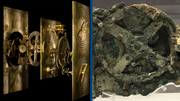B Douglas Slack wrote:
Me sets switches for the first 16-bit octal (hi bit = parity) word then presses the SW to E, E to M, and enters the next word in the switches. This is a Burroughs D-82, or as the Navy called it, a AN/UYK3. For two years I was the only person in the world that was allowed to program it (in fact, the only one who KNEW how to program it).
The is a shot of the front panel of the emulator I programmed just for the heck of it a couple of years ago. It is fully functional.
And now I know I'm way off topic, so I'll show myself out.
Bill
Oh my word—that looks exactly like something I could use on the farm. In fact, I’m pretty sure an AN/UYK-3 is the missing link between me and finally achieving some level of control around here.
Just imagine it:
Bit 1: Controls whether the goats stay in their pen or break out to reenact The Great Escape: Dairy Edition.
Bit 2: Deploys emergency chicken redirection protocols when they decide to cross the road for reasons still unknown to modern science.
Bit 3: Activates “Parrot Quiet Mode,” which would be the first time in history Hershel ever shuts up.
Bit 4: Automatically locates whichever dog has stolen my boots this time. Or Kevin the goat, for that matter.
Bit 5: Launches the Anti-Donkey-Bulldoze Sequence, preventing Pokeberry from rearranging the fence line (again) with her face. Would also work on Diablo, the Texas longhorn.
Bit 6: Dispenses goat treats to bribe peace negotiations. Frequently needed when Randi the Raccoon brings her babies calling to eat up all the goat treats.
Bit 7: Summons coffee to my hand because that’s the only way I survive mornings.
Bit 8: Triggers the tractor to actually start without prayer, threats, or tapping it with a hammer like a cartoon character. That way, we can get a head-start on Gerald, the Emu's uncanny timing of when the races start.
I don’t know what the rest of the bits do, but honestly? If your fancy octal-parity-super-panel thing could manage even HALF of this, I’d install it on the barn door and worship it daily.
So don’t you dare show yourself out—this is the most useful piece of machinery I’ve seen in years. If you can program it, surely you can make it goat-proof… right?
See-um-sayin'?
Happy trails,
MJ




